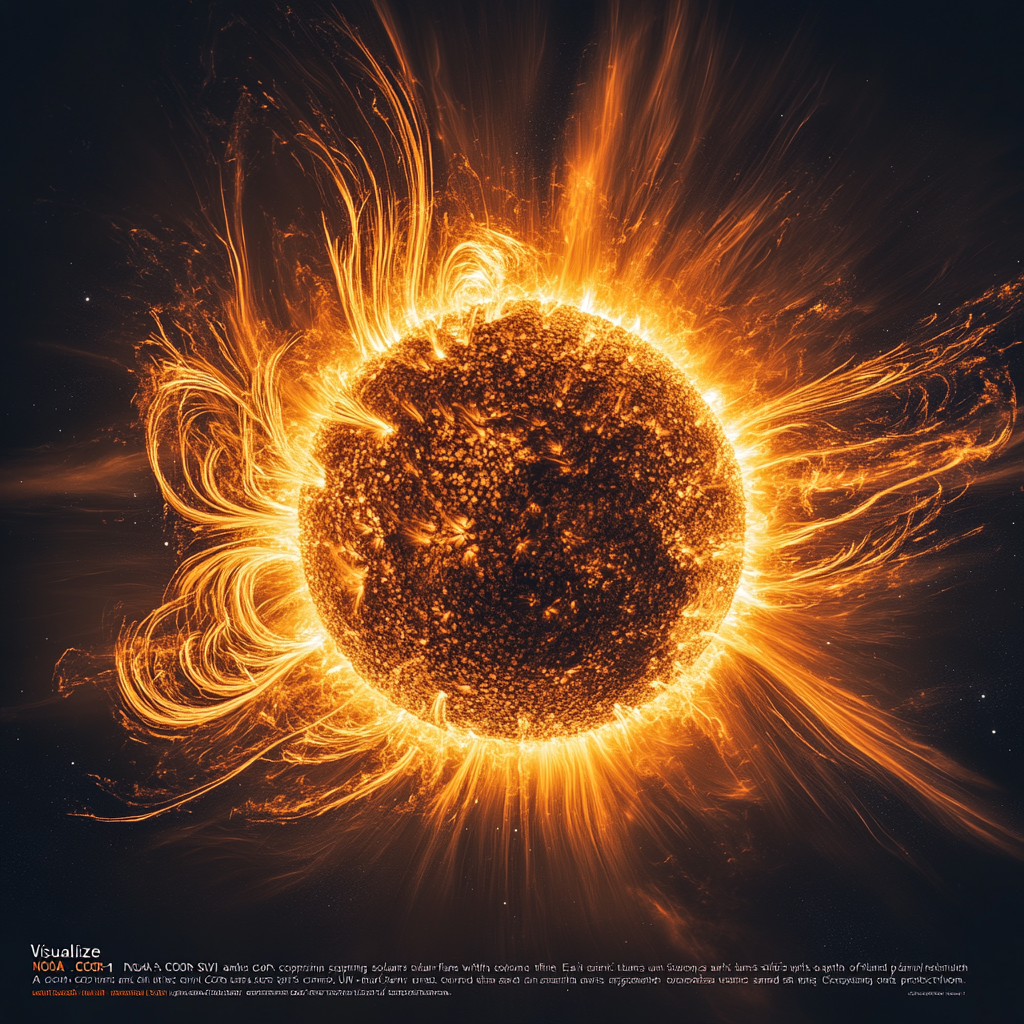
Sun Erupts: First Glimpse from NOAA’s Revolutionary Satellite
In the grand ballet of the cosmos, the sun is that fiery prima ballerina, sometimes charming us with its radiant grace, other times unleashing a tempestuous fury that rattles the Earth like a chaotic maraca. Just recently, our intrepid astronomers at the National Oceanic and Atmospheric Administration (NOAA) lifted the curtain on their latest masterpiece: the Compact Coronagraph (CCOR-1). This isn't just another fancy gadget in the sky; it's a game-changer in our quest to decode the solar symphony that can influence everything from the dazzling dance of the Northern Lights to the whirring of satellites overhead.
Now let’s get into the juicy bits. The CCOR-1 made its debut aboard the GOES-19 satellite in good old June 2024, and it’s as revolutionary as a rock star busting out a new hit. Unlike previous satellites that were more like snooze-fests focusing on long-term studies, CCOR-1 struts its stuff with a mission: to forecast solar activity. That means it’s all about delivering fresh intel straight from the sun, every 15 minutes! Just think about it—timely updates that promise to keep us in the loop as those fiery solar flares erupt like popcorn in a microwave.
James Spann, NOAA's senior wizard of space weather, has emphasized, “the forecasts can always rely on it.” In essence, this little marvel ensures that our predictions are not just guesswork but precise guides in navigating the often-chaotic solar landscape. It’s like having a magical crystal ball that forecasts when those brilliant auroras might light up the night sky—a sight that once seemed reserved for the heavens now within our predictive grasp.
The CCOR-1 operates as a solar telescope focused on the sun's corona—the outer layer shimmering with mystery and intrigue. This ethereal region remains hidden from our humble Earthlings, revealing itself only during total solar eclipses—a rare cosmic show. By using a mask to block direct sunlight (think of it like wearing stylish shades under the scorching sun), this innovative telescope allows us to capture awe-inspiring, crystal-clear images of the corona, unveiling its secrets one snap at a time.
And what kind of secrets does it reveal? Well, let’s talk about solar flares and coronal mass ejections (CMEs)—the sun’s fiery tantrums. Picture this: the sun flexes its magnetic muscles, distorts its magnetic field, and BAM! Out bursts hot plasma into the cosmos like confetti at a wild party. Sometimes this celebratory outpour is aimed in our direction, and that’s when Earth holds its breath. While these CMEs can create those stunning light displays we adore, they can also wreak havoc, threatening our GPS, communication systems, and, dare I say, the safety of our brave astronauts floating in the great beyond.
Now, you might think, “What’s the big deal about space weather?” Well, hold onto your telescopes because space weather is no trivial matter. It heats up our atmosphere, sending shockwaves through our technological infrastructure. Remember those pesky storms that knock out your cable? Many of those rogue disruptions stem from our solar overlord’s antics. As the sun dances through its 11-year solar cycle, watching for its flares is like keeping an eye on a moody friend. One moment they’re serene, and the next, they can explode—figuratively speaking, of course.
To give us a fighting chance against these solar shenanigans, NOAA has equipped the GOES satellites with an additional powerhouse: the Solar Ultraviolet Imager (SUVI). What’s the scoop on SUVI? It’s like the ultimate lookout, monitoring the sun’s hot outer atmosphere in extreme ultraviolet wavelengths. When a solar eruption begins to brew, those EUV photons are the first hints, alerting forecasters like a vigilant alarm clock—giving us up to 15 hours to prepare for the incoming cosmic storm.
But let’s not overlook the sheer beauty of it all. As CCOR-1 and SUVI take center stage, they unveil a stunning visual portfolio of the sun's antics. Gorgeous images showcase the hot coronal loops, dynamic active regions, and that tranquil corona. Each picture dares to reveal just how complex our sun really is. SUVI’s ability to image the solar corona in various wavelengths adds a level of exploration akin to peering into a kaleidoscope of fiery plasma—different temperatures and densities flashing through the spectrum. Who said science can’t be beautiful?
In conclusion, while the sun might radiate warmth, it also carries an unpredictable temperament that can flip the script. With the introduction of the CCOR-1 and its trusty sidekick SUVI, our understanding of space weather has taken a giant leap forward. Not only do these instruments equip us with the knowledge to decode the sun's performance, but they also serve to protect our modern life—keeping the lights on, the phones ringing, and the satellites beeping.
So, buckle up, space enthusiasts! The journey through the dynamics of our solar system is just heating up, and you won’t want to be left in the dark. Want to stay up to date with the latest news on neural networks and automation? Subscribe to our Telegram channel: @channel_neirotoken. Let's ride this solar wave together!

